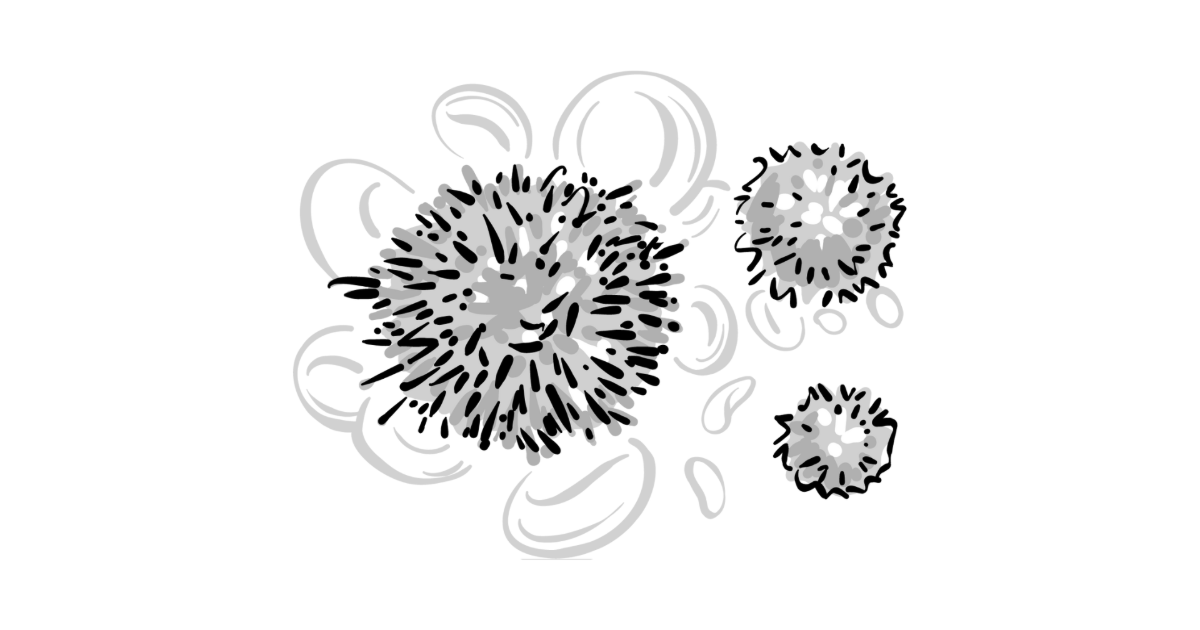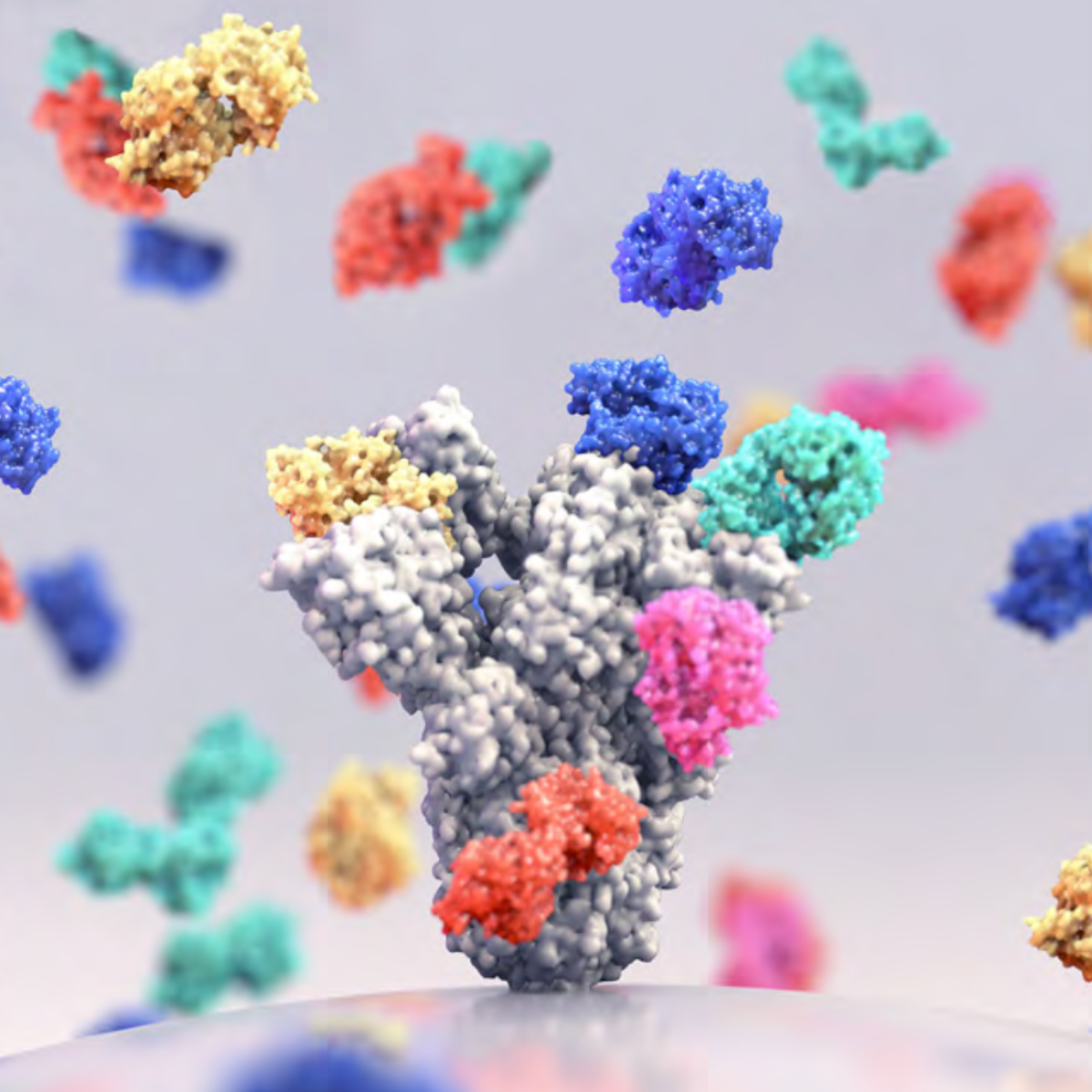Introduction
Antimicrobial resistance has become a global concern, posing significant challenges in the treatment of infectious diseases.1 Beta-lactam antibiotics, including penicillins, cephalosporins, carbapenems, and aztreonam, are commonly prescribed for bacterial infections.2 However, the widespread use of third generation cephalosporins to combat Gram-negative bacterial infections has contributed to the development of resistance against beta-lactam antibiotics.3 Consequently, this has led to the emergence of organisms producing Extended-Spectrum Beta-Lactamases (ESBLs) and carbapenemase, further exacerbating the issue.4 In 2024, the World Health Organization (WHO) classified carbapenem-resistant Pseudomonas aeruginosa, carbapenem-resistant Acinetobacter baumannii, and Carbapenem-resistant Enterobacterales (CRE) as “critical” and “high” priority pathogens.5
The spread of antibiotic-resistant organisms in health care facilities and in the community is a worrying epidemiological problem that could be influenced by the rate of faecal carriage of antibiotic-resistant organisms.6 The Enterobacterales, regardless of whether they are community or hospital-acquired, primarily originate from the digestive tract.7 This area is a hub for the exchange of resistance genes and antibiotic treatments, which can lead to the overgrowth of resistant bacteria.8 When antibiotic resistant isolates colonize the intestinal compartment, the risk of infection due to these bacteria significantly increases.9 Additionally, the intestinal compartment may act as a source for ESBL- and carbapenemase-producing resistance genes, which can spread to other Enterobacterales through horizontal transmission.10 Hence, being aware of the frequency of patients carrying resistant bacteria in their digestive tracts can serve as a means of forecasting the extent to which these bacteria may cause infections and spread among people.11–13In the past decade, there has been a global rise in reported cases of hospital-acquired infections caused by Gram-negative bacilli (GNB) that are resistant to carbapenem antibiotics.14–17 Hospitalized patients face a double burden as they not only have to deal with their health problems but also with a severe infection of this scale. Hence, this critical situation is a matter of concern for all healthcare systems.18,19
In Africa, ESBL-PE (ESBL Producing Enterobacterales) carriage in the gastrointestinal tract ranges from 10% to 50%, highlighting the severity of the situation.20 In Benin, a West African country, government has formally validated its National Action Plan (NAP); however, there are ongoing efforts to implement these measures, and as of now, the NAP has not yet been included on the WHO NAP website.21 More resources are required to develop laboratory testing capacity for the accurate detection of antibiotic-resistant bacteria throughout the country.22 While several studies have reported systematic data about AMR prevalence in general or focused on specific sample types, there is a lack of data regarding fecal carriage of antibiotic-resistant bacteria.23–28 Recent studies in Benin have reported high rates of multidrug-resistant pathogens and revealed the first detection of a plasmid-encoded New-Delhi metallo-beta-lactamase-1 (NDM-1) producing Acinetobacter baumannii from surgical site infections within hospitals.29,30 Prior to this, a study reported the first occurrence of hospital-originated Pseudomonas aeruginosa producing carbapenemase VIM-2.31 Additionally, there is an increased risk of infection associated with care,24,32 and wound contamination by hospital bacteria.24,33 Therefore, this study aims to determine the one-day prevalence of faecal carriage of ESBL and carbapenemase producing Gram-negative bacilli, along with associated risk factors and to characterize the resistant isolates.
Methods
Study Design and Sampling
This cross-sectional study, conducted in December 2022, focused on fecal samples from post-surgery patients (accidents and injury-related cases) in tertiary hospitals in Benin. A consecutive sampling approach was employed, where stool/rectal samples were collected from every consenting patient who had been hospitalized for more than 48 hours, until the target sample size of 30 was reached in each hospital. This 48-hour cutoff was used to distinguish hospital-acquired from community-acquired colonization. Four hospitals (Central Hospital and University of Mother and Child Lagoon of Cotonou, Departmental Hospital Center of Zou and the Hills, Departmental Hospital Center of Borgou-Alibori, and Hospital Saint Jean de Dieu of Tanguiéta) participated in the study, with patients with digestive pathologies excluded. The sample size was determined based on the bed capacity of the surgery wards in each hospital, ranging from 39 to 47 beds. All samples were collected on the same day, following strict aseptic protocols. A questionnaire was administered to gather sociodemographic information, clinical data, and medical history. The study received prospective ethical approval from the Ethics and Research Committee of the Institute of Applied Biomedical Sciences (CER-ISBA) under approval number 154. Written informed consent was obtained from each participant or their parent/guardian before participation, with a clear explanation of the study’s objectives. All research activities were conducted in accordance with the Declaration of Helsinki.
Species Identification, Antibiotic Susceptibility Testing, ESBL and Carbapenemase Detection
Fecal samples were screened for betalactam and carbapenem resistance using CHROMID® ESBL and CHROMID® CARBA SMART agar media (Bio-Rad, USA). After 24 hours of incubation at 37°C, distinct colonies were selected based on their characteristic color on the selective media. Pure cultures were obtained using again CHROMID® ESBL and CHROMID® CARBA SMART agar. Gram-negative bacilli, excluding Stenotrophomonas maltophilia, were identified using Matrix-Assisted Laser Desorption Ionization–Time of Flight (MALDI-TOF) mass spectrometry (Bruker Daltonics, Bremen, Germany). Antibiotic susceptibility testing was performed with inoculum from a subculture on Mueller–Hinton agar using the disc diffusion method on Mueller–Hinton agar, following recommendations from the European Committee on Antimicrobial Susceptibility Testing.34 Various antibiotic discs manufactured by Bio-Rad were used for the testing. ESBL production was confirmed using the double disk synergy technique. For Enterobacterales, discs (Bio-Rad, United States) containing cephalosporins including cefotaxime 30 µg, ceftazidime 30µg, cefepime 30µg were applied next to clavulanic acid disc following recommendations from EUCAST.35 For Pseudomonas spp, imipenem double-disc synergy test (DDS-IPM) with discs containing ceftazidime 30µg, cefepime 30µg and a disc with imipenem 10µg as the ESBL inhibitor was used.36 Acinetobacter spp were tested for ESBL production by placing discs containing piperacillin (30 μg) and a combination of piperacilline + tazobactam (30–6µg) on agar plates.37 Resistance to one of carbapenems tested was used as an indicator for the continuation of tests for detecting carbapenemase production. On these strains, the carbapenemase production test was carried out using the rapid diagnostic kit NG-TEST CARBA 5 (Hardy Diagnostics, California, United States) capable of detecting KPC, OXA-48-like, VIM, IMP, and NDM carbapenemases. Reference strain of Escherichia coli ATCC 25922 was used as quality control for the antibiotic susceptibility test.
Detection of Antibiotic Resistance Genes
Bacterial DNA was extracted from strains isolated from ESBL agar using boiling method. Multiplex PCR was performed to identify isolates carrying betalactamase encoding genes,38 carbapenemase encoding genes39 and PMQR genes.40 Each reaction was prepared in a total volume of 25 µL using OneTaq® Quick-Load® 2X Master Mix with Standard Buffer (Biolabs, South Africa) and following the manufacturer instructions. The DNA fragments underwent electrophoresis in a 2% agarose gel, and the results were interpreted by comparing the migration of the fragments to marker sizes. The reference strain Escherichia coli ATCC 25922 was used as a negative control, while clinical strains producing ESBL and carbapenemase served as positive controls for the PCR assays.
Statistical Analysis
Data entry was performed using Excel 2019, and statistical analysis was conducted using Stata SE 11 software. Univariate analysis was initially conducted, selecting variables with a p-value less than 0.05 as potentially associated with ESBL and carbapenemase producing bacteria carriage. Results were reported as odds ratio (OR) with corresponding 95% confidence intervals, using an interpretation threshold of α = 0.05. The chi-square test was also performed to determine the degree of association between factors and independent variables.
Results
Factors Associated with the Carriage of ESBL and Carbapenemase Producing Gram Negative Bacteria
Table 1 described the factors associated with the carriage of ESBL Producing Gram negative bacteria. Out of the 120 patients enrolled in the study, 46 were identified as carriers of ESBL-producing bacteria, resulting in a prevalence of ESBL carriage at 38.33%. The study of the association of variables shows a high degree of association (p < 0.05) with ESBL carriage for the factors: independent walking and use of a wheelchair (Table 1).
|
Table 1 Factors Associated with the Carriage of ESBL Producing Bacteria
|
Table 2 described the factors associated with the carriage of carbapenem-resistant bacteria. Out of the 120 patients enrolled in the study, 59 were identified as carriers of carbapenem-resistant bacteria, resulting in a prevalence of 49.16%. Analysis of the association between variables revealed no statistically significant associations (p > 0.05) among the factors studied (Table 2).
 |
Table 2 Factors Associated with the Carriage of Carbapenem-Resistant Bacteria
|
Species Identification and Percentage of Antibiotic Resistance
Table 3 shows the results of the identification of the isolated bacterial species. A total of 92 strains were isolated using ESBL agar. Among the bacterial species isolated from ESBL agar, Escherichia coli (44.56%) was the most frequently isolated, followed by Pseudomonas aeruginosa (26.08%) and Acinetobacter baumannii (10.87%). Notably, all Enterobacter cloacae strains (100%), most Escherichia coli strains (82.93%), and Klebsiella pneumoniae strains (80%) were found to be ESBL producers. A total of 83 strains were isolated using carba agar. The identification of isolates from carba agar showed a predominance of the species Escherichia coli (44.45%) followed by the species Klebsiella pneumoniae (16.06%) and Acinetobacter baumanii (13.58%). A total of 64 (77.10%) isolates were found to be resistant at least to one of the tested carbapenem antibiotics. Klebsiella pneumoniae (92.30%) and Escherichia coli (75%) were the most represented species.
 |
Table 3 Distribution of Isolates According to the Culture Media
|
The resistance percentage of the isolates from ESBL agar is presented in Table 4. Notably, high rates of resistance were observed for ofloxacin (ranging from 97.11% to 100%), amoxicillin + clavulanic acid (ranging from 79.41% to 100%), and cefotaxime (ranging from 50% to 100%) among the tested antibiotics. Most Enterobacter cloacae, Escherichia coli, Klebsiella pneumoniae strains demonstrated multidrug resistance. On the other hand, Pseudomonas aeruginosa strains exhibited susceptibility to most of the tested antibiotics, except for cefsulodin. Furthermore, the lowest levels of resistance were observed with antibiotics such as imipenem, ertapenem, and temocillin (Table 4).
 |
Table 4 Percentage of Antibiotic Resistance of Isolates Recovered from ESBL Screening Agar
|
The study of the resistance profile of Enterobacterales isolates from carba agar was presented in Table 5. The results showed that all isolates (100%) were resistant to amoxicillin and piperacillin. Similarly, a higher rate of resistance was observed to carbapenem, ranging from 87.50% to 100%. Various resistance rates were observed for other antibiotics.
 |
Table 5 Percentage of Antibiotic Resistance of Enterobacterales Isolates Recovered from Carba Screening Agar
|
The study of the resistance profile of Pseudomonas spp was presented in Table 6. The results showed that isolate of Pseudomonas putida was resistant to all tested antibiotics excepted amikacin. Similarly, 80% (4/5) of Pseudomonas aeruginosa isolates exhibited resistance toward all tested antibiotics but some isolates (3/5) were susceptible to amikacin and aztreonam.
 |
Table 6 Percentage of Antibiotic Resistance of Pseudomonas Spp Isolates Recovered from Carba Screening Agar
|
The study of the antibiotic resistance profile of Acinetobacter spp was presented in Table 7. The results showed that isolate of Acinetobacter nosocomialis was resistant to all tested antibiotics. Higher resistance rate (>80%) was also observed for Acinetobacter baumannii but 41.66% were susceptible to Amikacin.
 |
Table 7 Percentage of Antibiotic Resistance of Acinetobacter Spp Isolates Recovered from Carba Screening Agar
|
Distribution of Carbapenemase Types
A total of 64 isolates resistant at least to one of the tested carbapenem antibiotics were selected for NG-TEST CARBA 5 (KPC, OXA-48-like, VIM, IMP, and NDM). All isolates selected were found to be carbapenemase producers. NDM (43.08%) was the most detected type of carbapenemase followed by strains for which carbapenemase type was not detected (30.77%) (Table 8).
 |
Table 8 Distribution of Carbapenemase Types Among Species Isolated by Phenotypic Test
|
 |
Table 9 Distribution of Detected Carbapenemase Gene Among Species Isolated
|
Antibiotic Resistance Genes Detection
Tables 9 and 10 present the distribution of resistance genes in carbapenemase and ESBL producing isolates. blaNDM (54.68%) was the most detected carbapenemase genes. Among the ESBL-producing isolates, the presence of five ESBL genes was identified and presented in Table 10. The most detected genes were blaCTXM-1 and blaCTXM-15, accounting for 91.49% of the isolates. Additionally, the blaTEM (36.17%) and blaOXA-1 (29.78%) were found in the isolates. Quinolone resistance genes were prevalent among the isolates, with qnrb present in 70.21% of the isolates, followed by qnrs in 63.82% of the isolates, and aac(6′)-ib-cr in 53.19% of the isolates. Among the different species, Escherichia coli exhibited a high prevalence (97.05%) of the blaCTXM-1 gene, while Enterobacter cloacae had a prevalence of 80% for the same gene. Electrophoresis gel images are shown in supplementary data (Figures S1–S6).
 |
Table 10 Distribution of Resistance Genes in ESBL Producing Isolates
|
Discussion
The emergence and global spread of extended-spectrum β-lactamase (ESBL) and carbapenemase producing Enterobacterales pose a significant threat to public health.20 The objective of this study was to determine the one-day prevalence of faecal carriage of ESBL and carbapenemase producing Gram-negative bacilli, along with associated risk factors, and to characterize the resistant isolates.
In this study, a culture-dependent approach was used to detect ESBL-producing- and carbapenem-resistant Gram-negative bacteria. The results of this study revealed a significant prevalence of carriage of ESBL-producing bacteria (38.33%), indicating a potential risk for nosocomial infections and the dissemination of antimicrobial resistance genes in the community. Lower rates of ESBL-PE carriage prevalence were reported in other African countries such as Gabon (11.8% to 16.7%), Cameroon (15% to 18%), Central African Republic (19.3%), and Nigeria (20.9%).41–44 In Madagascar, the prevalence of ESBL-PE among individuals was found to be 10.1%.45 On the other hand, a higher prevalence of ESBL-PE was reported in Burkina Faso.46 Disparities in prevalence rates among countries and the increasing prevalence of ESBL-producing bacteria in Africa have been highlighted.47 However, our findings do not align with their estimation that the overall rate of ESBL-PE in clinical samples was below 15%. Concerning carbapenem resistance detection, out of the 120 samples that were collected, a total of 81 strains were isolated. As 59 were identified as carriers of carbapenem-resistant bacteria, the prevalence of carbapenem resistance carriage is therefore 49.16%. A study conducted in Egypt revealed that 62.7% of Enterobacterales isolates were resistant to carbapenems, which is consistent with our findings.48 Similarly, high rates of carbapenem resistance were observed in South Africa (68%),49 and Sudan (83%).50 Respectively, 28.6% and 35% rates of resistance were observed in Uganda and Tanzania.51,52 The prevalence of ESBL-PE values among individuals in different African countries varies significantly not only between countries, as underlined by the authors, but also between cities, sites (such as rural versus urban areas, and hospitals versus communities), and over different years. This variability should be highlighted even if the provided data remain indicative. The unrestricted use of antibiotics, which is prevalent among most of the population in low- and middle-income countries (LMICs) in Africa especially in Benin, is likely to lead to an increase in carbapenem resistance in the region.53 In this study, the samples were collected within one day (24 hours), and it is not possible to estimate whether these results show an intermittent or regular situation in the study area. Sampling at different times of the year could give a more reliable profile of the situation.
In this study, no significant association was found between these risk factors and carriage of ESBL-producing bacteria. Similar investigations focusing on carbapenemase-producing isolates did not yield comparable results.54,55 The study of the association of variables shows a high degree of association (p < 0.05) for the factors sex, independent walking, and use of a wheelchair. Patients who use wheelchairs or have limited mobility spend generally more time in healthcare facilities, potentially increasing their exposure to resistant isolates. Also, young patient age has been regarded as a risk factor for Carbapenem-resistant Enterobacterales (CRE) infection.50 Length of hospital stay, sex, age, presence of immunosuppression, independent walking, bedridden patient, diabetic patient, presence of sign of infection, antibiotic treatment, history of hospitalization in the last 6 months, antibiotic treatment last 6 months, patient with faecal/urinary incontinence were the other risk factors examined in this survey. Neither of these risk factors was significantly associated with carbapenemase producing strains carriage. Numerous studies have shown interest in assessing the risk factors associated to carbapenemase producing isolates carriage but none of them have found similar results.54,55
In total, 51.08% of the isolated strains were found to be ESBL producers. The identification of ESBL producing bacteria species revealed a predominance of Escherichia coli (82.93%), followed by Enterobacter cloacae (100%; n = 5) and Klebsiella pneumoniae (80%; n = 4). Notably, Enterobacter cloacae, Escherichia coli, and Klebsiella pneumoniae strains exhibited high proportions (100%, 82.93%, and 80% respectively) of ESBL production. Similar species predominance was observed in recent studies.44,56 Other studies conducted in Cameroon and China have reported a higher diversity of ESBL-PE species, including Enterobacter spp. and Citrobacter spp.57,58 Nevertheless, E. coli consistently emerges as the most identified species during colonization by ESBL-PE. It is worth noting that these bacteria, which pass through the human intestine, have the potential to acquire resistance through horizontal gene transfer.46 The identification of bacteria with resistance to carbapenems showed a predominance of the species Escherichia coli (44.45%) followed by the species Klebsiella pneumoniae (16.06%) and Acinetobacter baumanii (13.58%). Same isolates were reported in various studies.48–52 Patients with carbapenem-resistant Enterobacterales often face treatment failure, prolonged hospital stay, high expenses and a high possibility of death.59
The antibiotic resistance phenotype results of isolates from ESBL agar showed high rate of resistance for ofloxacin (ranging from 97.11% to 100%), amoxicillin + clavulanic acid (ranging from 79.41% to 100%), and cefotaxime (ranging from 50% to 100%) among the tested antibiotics. Multidrug resistance was common among Enterobacter cloacae, Escherichia coli and Klebsiella pneumoniae strains. Similar observations were made,44 indicating significant resistance not only to β-lactam antibiotics due to ESBL production but also to other antibiotic families, including quinolones. In this study, the carbapenems (imipenem and ertapenem) showed the highest effectiveness against ESBL-producing Gram-negative bacteria (GNBs). These carbapenems are considered expensive last-resort drugs in the region but have demonstrated favorable activity against GNBs that produce this enzyme.60–62 This finding is consistent with a report which indicates the widespread distribution of ESBL producers among Enterobacterales.50 The study of antibiotic susceptibility patterns of carbapenem-resistant isolates revealed that the majority of isolates were resistant to all tested antibiotics, including carbapenems. Distribution of carba types according to species isolated and ESBL production showed that 52.31% of isolates were ESBL producers, but none non-Enterobacterales was found to be ESBL producing. All isolates selected were found to be carbapenemase producers. NDM (43.08%) was the most detected type of carbapenemase followed by other types (30.77%) using the aforementioned phenotypic method. The NDM enzyme was frequently encountered among Enterobacterales as one of the most common carbapenemases, and it was also observed in A. baumannii and P. aeruginosa isolates.63,64 Most of non-Enterobacterales were found to produce other types of carbapenemase. This is consistent with a study reporting that carbapenemase producers are becoming highly distributed among Enterobacterales.50 Non-Enterobacterales including Pseudomonas spp employ mainly porin expression reduction and increased chromosomal cephalosporinase activity against carbapenems.65
The study extensively examined the presence of ESBL genes among the isolates. The most frequently detected ESBL genes were blaCTXM-1 and blaCTXM-15 (91.49%), followed by blaTEM (36.17%). These genes are associated with resistance to a broad range of β-lactam antibiotics. Similar findings have been reported in other studies conducted in Cameroon (96% of isolates), Indonesia (94.5%), and Tunisia (91%), indicating the global dominance of CTX-M-type ESBLs.57,66,67 The study also investigated the presence of other resistance genes associated with quinolone and carbapenem resistance. The isolates exhibited the presence of quinolone resistance genes, such as qnrb (70.21%), qnrs (63.82%), and aac(6′)-ib-cr (53.19%), indicating the potential for reduced efficacy of fluoroquinolone antibiotics in treating infections caused by ESBL-producing bacteria. This result supports the concept co-expression due to the isolates harboring several antibiotic resistance genes. Furthermore, the presence of qnr genes and aac(6′)-ib-cr alongside ESBL-encoding genes further strengthens the possibility of co-selection.68 These findings confirm the multidrug-resistant nature of ESBL-PE, which severely limits available therapeutic options and contributes to the widespread use of carbapenems. The detection of carbapenemase-encoding genes in a study is vital for understanding and addressing the growing problem of antibiotic resistance. It provides critical information for infection control, treatment decisions, and the development of strategies to preserve the effectiveness of antibiotics in the face of rising resistance. In this study, blaNDM (54.68%) was the most detected carbapenemase genes mainly in Klebsiella pneumoniae (91.66%), Enterobacter cloacae (77.77%) and Pseudomonas aeruginosa (75%). Our results are consistent with others studies in Sudan, Senegal, and South Africa.49,50,59 This confirms that blaNDM could demonstrate a capacity for rapid dissemination.69 The plasmids that carry carbapenemase genes, such as blaNDM, exhibit significant diversity and can harbor numerous additional resistance genes, including ESBL-alleles. The presence of multiple resistance genes in certain isolates, as observed in this study, indicates the presence of multidrug-resistant pathogens. These pathogens are responsible for treatment failures, outbreaks of infections, and increased treatment costs.
The primary aim was to determine the prevalence of ESBL and carbapenemase-producing bacteria at a single time point in hospitalized post-surgical patients, providing baseline data for future longitudinal studies on acquisition dynamics. The one-day design and >48-hour hospitalization criterion limit differentiation between community- and hospital-acquired colonization. Without admission screening or follow-up, acquisition timing and transmission pathways cannot be confirmed. Also, Limited clinical and hospital data restrict analysis of risk factors and transmission routes. Therefore, conclusions about nosocomial spread should be interpreted cautiously. The absence of whole genome sequencing prevents detailed epidemiological and transmission analysis. Future studies with longitudinal sampling, comprehensive data, and genomic tools are needed to clarify acquisition and guide interventions.
Conclusion
This study reports a high one-day prevalence of fecal carriage of extended-spectrum β-lactamase (ESBL) and carbapenemase-producing Gram-negative bacteria among post-surgical patients hospitalized for over 48 hours in Benin. The predominance of Escherichia coli, Klebsiella pneumoniae, Pseudomonas aeruginosa, and Acinetobacter baumannii, combined with high resistance to β-lactams and fluoroquinolones, underscores the clinical and public health significance of these pathogens. Genotypic analysis revealed frequent detection of blaCTX-M and blaNDM, along with co-resistance genes, indicating the circulation of multidrug-resistant organisms in the hospital setting. While this cross-sectional study cannot confirm nosocomial acquisition, it provides important baseline data to inform future surveillance and infection control efforts in Beninese hospitals.
Abbreviations
CTX-M: Cefotaxime-Munich; ESBL: Extended-Spectrum β-lactamase; ESBL-PE: ESBL Producing Enterobacterales; GNB: Gram Negative Bacilli; MBL: Metallo-betalactamase; NDM: New Delhi Metallo-betalactamase.
Data Sharing Statement
All data generated and/or analyzed during the current study are included in this published article. The datasets used and/or analyzed during this study are also available from the corresponding author on reasonable request.
Ethical Approval
The study proposal was reviewed and approved by the Ethics and Research Committee of the Institute of Applied Biomedical Sciences (CER-ISBA) under number 154. Written informed consent was obtained from each patient or their parent/guardian before participation, accompanied by a concise explanation of the study’s objective. The research work (sampling from hospitalized patients, sample processing and data analysis) in our study was conducted in accordance with the Declaration of Helsinki.
Acknowledgments
The authors are very grateful to Alida Oussou, Donald Bokossa, Lydie Comlan, Adonias Houefonde and Yedia Djohoun for their great help during the implementation of this study. They are also very grateful to all the staff of the hospitals involved in the study and their willing to support any kind of interventions for a better care of patients. They thank the patients who accepted to participate in this study.
Author Contributions
All authors made a significant contribution to the work reported, whether that is in the conception, study design, execution, acquisition of data, analysis and interpretation, or in all these areas; took part in drafting, revising or critically reviewing the article; gave final approval of the version to be published; have agreed on the journal to which the article has been submitted; and agree to be accountable for all aspects of the work.
Funding
This research received no external funding.
Disclosure
The authors declare no conflict of interest.
References
1. Kedišaletše M, Phumuzile D, Angela D, Andrew W, Mae NF. Epidemiology, risk factors, and clinical outcomes of carbapenem-resistant Enterobacterales in Africa: a systematic review. JGAR. 2023;35:297–306.
2. Chelaru EC, Muntean AA, Hogea MO, Muntean MM, Popa MI, Popa GL. The importance of carbapenemase-producing Enterobacterales in African countries: evolution and current burden. Antibiotics. 2024;13(4):295. doi:10.3390/antibiotics13040295
3. Akingbade OA, Ogiogwa IJ, Okonko IO, et al. Plasmid profile of isolated Klebsiella species in a Tertiary Hospital in Abeokuta, Ogun State, Nigeria. World Appl Sci J. 2012;3:371–378.
4. Shristi R, Gokhale S, Adhikari B. Prevalence of extended spectrum beta-lactamases among Escherichia coli and Klebsiella spp isolates in Manipal Teaching Hospital, Pokhara, Nepal. JMID. 2015;5(2):69–75.
5. WHO. WHO bacterial priority pathogens list, 2024: bacterial pathogens of public health importance to guide research, development and strategies to prevent and control antimicrobial resistance; 2024. Available from: https://www.who.int/publications-detail-redirect/9789240093461. Accessed July 16, 2024.
6. Valverde A, Grill F, Coque TM, et al. High rate of intestinal colonization with extended-spectrum-β-lactamase-producing organisms in household contacts of infected community patients. J Clin Microbiol. 2008;46(8):2796–2799. doi:10.1128/JCM.01008-08
7. Woerther PL, Burdet C, Chachaty E, Andremont A. Trends in human fecal carriage of extended-Spectrum β-Lactamases in the community: toward the globalization of CTX-M. Clin Microbiol Rev. 2013;26(4):744–758. doi:10.1128/CMR.00023-13
8. La Fauci V, Costa GB, Genovese C, Palamara MAR, Alessi V, Squeri R. Drug-resistant bacteria on hands of healthcare workers and in the patient area: an environmental survey in Southern Italy’s hospital. Rev Esp Quimioter. 2019;32(4):303–310. doi:10.1056/NEJMoa1306801
9. Tajeddin E, Rashidan M, Razaghi M, et al. The role of the intensive care unit environment and health-care workers in the transmission of bacteria associated with hospital acquired infections. J Infect Public Health. 2016;9(1):13–23. doi:10.1016/j.jiph.2015.05.010
10. Weisenberg SA, Mediavilla JR, Chen L, et al. Extended spectrum beta-lactamase-producing Enterobacteriaceae. Int Travelers Non-Travelers New York City. 2012;7(9):e45141.
11. Ouédraogo AS, Sanou S, Kissou A, et al. Fecal carriage of Enterobacteriaceae producing extended-spectrum beta-lactamases in hospitalized patients and healthy community volunteers in Burkina Faso. MDR. 2017;23(1):63–70. doi:10.1089/mdr.2015.0356
12. Umezawa K, Asai S, Ohshima T, et al. Outbreak of drug-resistant Acinetobacter baumannii ST219 caused by oral care using tap water from contaminated hand hygiene sinks as a reservoir. Am J Infect Control. 2015;43(11):1249–1251. doi:10.1016/j.ajic.2015.06.016
13. Khan A, Miller WR, Arias CA. Mechanisms of antimicrobial resistance among hospital-associated pathogens. Expert Rev Anti Infect Ther. 2018;16(4):269–287. doi:10.1080/14787210.2018.1456919
14. Abdeta A, Bitew A, Fentaw S, et al. Phenotypic characterization of carbapenem non-susceptible gram-negative bacilli isolated from clinical specimens. PLoS One. 2021;16(12):e0256556. doi:10.1371/journal.pone.0256556
15. Raj S, Sharma T, Pradhan D, et al. Comparative analysis of clinical and genomic characteristics of hypervirulent Klebsiella pneumoniae from hospital and community settings: experience from a Tertiary Healthcare Center in India. Microbiol Spectr. 2022;10(5):e00376–22. doi:10.1128/spectrum.00376-22
16. Wei L, Wu Q, Zhang J, et al. Prevalence, virulence, antimicrobial resistance, and molecular characterization of Pseudomonas aeruginosa isolates from drinking water in China. Front Microbiol. 2020;11:544653. doi:10.3389/fmicb.2020.544653
17. Wu W, Feng Y, Tang G, Qiao F, McNally A, Zong Z. NDM metallo-β-lactamases and their bacterial producers in health care settings. Clin Microbiol Rev. 2019;32(2):e00115–18. doi:10.1128/CMR.00115-18
18. Jia H, Sun Q, Ruan Z, Xie X. Characterization of a small plasmid carrying the carbapenem resistance gene blaOXA-72 from community-acquired Acinetobacter baumannii sequence type 880 in China. Infect Drug Resist. 2019;1545–1553. doi:10.2147/IDR.S202803
19. Zhu Y, Xiao T, Wang Y, et al. Socioeconomic burden of bloodstream infections caused by carbapenem-resistant Enterobacteriaceae. Infect Drug Resist. 2021;14:5385–5393. doi:10.2147/IDR.S341664
20. Bezabih YM, Sabiiti W, Alamneh E, et al. The global prevalence and trend of human intestinal carriage of ESBL-producing Escherichia coli in the community. J Antimicrob Chemother. 2021;76(1):22–29. doi:10.1093/jac/dkaa399
21. Sariola S, Butcher A, Cañada JA, Aïkpé M, Compaore A. Closing the GAP in antimicrobial resistance policy in Benin and Burkina Faso. mSystems. 2022;7(4):e00150–22. doi:10.1128/msystems.00150-22
22. Legba BB, Dougnon V, Koudokpon H, et al. Assessment of blood cultures and antibiotic susceptibility testing for bacterial sepsis diagnosis and utilization of results by clinicians in Benin: a qualitative study. Front Public Health. 2023;10:5487. doi:10.3389/fpubh.2022.1088590
23. Anago E, Ayi-Fanou L, Akpovi CD, et al. Antibiotic resistance and genotype of beta-lactamase producing Escherichia coli in nosocomial infections in Cotonou, Benin. Ann Clin Microbiol Antimicrob. 2015;14(1):1–6. doi:10.1186/s12941-014-0061-1
24. Dougnon V, Koudokpon H, Hounmanou YMG, et al. High prevalence of multidrug-resistant bacteria in the Centre Hospitalier et Universitaire de la Mère et de l’Enfant Lagune (CHU-MEL) reveals implications of poor hygiene practices in healthcare. SN Compr Clin Med. 2019;1(12):1029–1037. doi:10.1007/s42399-019-00149-3
25. Gbotche E, Dougnon V, Chabi Y, et al. Molecular characterization of Enterobacteriaceae producing β-lactamase and methicillin-resistant staphylococci isolated from the hospital environment and catheters in two public hospitals in Benin, Republic of Benin. Bio-Research. 2020;18(2):1164–1176. doi:10.4314/br.v18i2.5
26. Deguenon E, Dougnon V, Houssou VMC, et al. Hospital effluents as sources of antibiotics residues, resistant bacteria and heavy metals in Benin. SN Appl Sci. 2022;4(8):206. doi:10.1007/s42452-022-05095-9
27. Markkanen MA, Haukka K, Pärnänen KM, et al. Metagenomic analysis of the abundance and composition of antibiotic resistance genes in Hospital Wastewater in Benin, Burkina Faso, and Finland. Msphere. 2023;8:e00538–22. doi:10.1128/msphere.00538-22
28. Ombelet S, Kpossou G, Kotchare C, et al. Blood culture surveillance in a secondary care hospital in Benin: epidemiology of bloodstream infection pathogens and antimicrobial resistance. BMC Infect Dis. 2022;22(1):1–15. doi:10.1186/s12879-022-07077-z
29. Yehouenou C, Bogaerts B, Vanneste K, et al. First detection of a plasmid-encoded New-Delhi metallo-beta-lactamase-1 (NDM-1) producing Acinetobacter baumannii using whole genome sequencing, isolated in a clinical setting in Benin. Ann Clin Microbiol Antimicrob. 2021;20(1):1–7. doi:10.1186/s12941-020-00411-w
30. Yehouenou CL, Kpangon AA, Affolabi D, et al. Antimicrobial resistance in hospitalized surgical patients: a silently emerging public health concern in Benin. Ann Clin Microbiol Antimicrob. 2020;19(1):54. doi:10.1186/s12941-020-00398-4
31. Koudokpon H, Dougnon V, Hadjadj L, et al. First sequence analysis of genes mediating extended-spectrum beta-lactamase (ESBL) bla-TEM, SHV-and CTX-M production in isolates of Enterobacteriaceae in Southern Benin. Int J Infect. 2018;5(4):e83194.
32. Afle FCD, Agbankpe AJ, Johnson RC. Healthcare-associated infections: bacteriological characterization of the hospital surfaces in the University Hospital of Abomey-Calavi/so-ava in South Benin (West Africa). BMC Infect Dis. 2019;19:1–7. doi:10.1186/s12879-018-3648-x
33. Dougnon VT, Sintondji K, Koudokpon CH, et al. Investigating Catheter-related infections in Southern Benin Hospitals: identification, susceptibility, and resistance genes of involved bacterial strains. Microorganisms. 2023;11(3):617. doi:10.3390/microorganisms11030617
34. EUCAST. Comité de l’Antibiograme de la Société Française de Microbiologie. Société Française de Microbiologie; 2022. Available from: https://www.sfm-microbiologie.org/boutique/comite-de-lantibiograme-de-la-sfm-casfm/. Accessed November 17, 2022.
35. Tan TY, Ng LSY, He J, Koh TH, Hsu LY. Evaluation of screening methods to detect plasmid-mediated AmpC in Escherichia coli, Klebsiella pneumoniae, and Proteus mirabilis. AAC. 2009;53(1):146–149. doi:10.1128/AAC.00862-08
36. Weldhagen GF, Poirel L, Nordmann P. Ambler Class A Extended-Spectrum β-Lactamases in Pseudomonas aeruginosa: novel Developments and Clinical Impact. AAC. 2003;47(8):2385–2392. doi:10.1128/AAC.47.8.2385-2392.2003
37. Kumari M, Bhattarai NR, Rai K, Pandit TK, Khanal B. Multidrug-resistant Acinetobacter: detection of ESBL, MBL, bla genotype, and biofilm formation at a Tertiary Care Hospital in Eastern Nepal. Int J Microbiol. 2022;2022(1):8168000. doi:10.1155/2022/8168000
38. Dallenne C, Da Costa A, Decré D, Favier C, Arlet G. Development of a set of multiplex PCR assays for the detection of genes encoding important β-lactamases in Enterobacteriaceae. J Antimicrob Chemother. 2010;65(3):490–495. doi:10.1093/jac/dkp498
39. Cerezales M, Biniossek L, Gerson S, et al. Novel multiplex PCRs for detection of the most prevalent carbapenemase genes in Gram-negative bacteria within Germany. J Med Microbiol. 2021;70(3):001310. doi:10.1099/jmm.0.001310
40. Ciesielczuk H, Hornsey M, Choi V, Woodford N, Wareham DW. Development and evaluation of a multiplex PCR for eight plasmid-mediated quinolone-resistance determinants. J Med Microbiol. 2013;62(12):1823–1827. doi:10.1099/jmm.0.064428-0
41. Bercion R, Mossoro-Kpinde D, Manirakiza A, Le Faou A. Increasing prevalence of antimicrobial resistance among Enterobacteriaceae uropathogens in Bangui, Central African Republic. JIDC. 2009;3(03):187–190. doi:10.3855/jidc.34
42. Ogbolu DO, Daini OA, Ogunledun A, Alli AO, Webber MA. High levels of multidrug resistance in clinical isolates of Gram-negative pathogens from Nigeria. Int J Antimicrob Agents. 2011;37(1):62–66. doi:10.1016/j.ijantimicag.2010.08.019
43. Yala JF, Mabika RM, Bisseye C, et al. Phenotypic and genotypic characterization of extended-spectrum-beta-lactamases producing-Enterobacteriaceae (ESBLE) in patients attending Omar Bongo Ondimba military hospital at Libreville (Gabon). J Mol Microbiol Biotechnol. 2016;4(6):944–949.
44. Dikoumba AC, Onanga R, Boundenga L, Bignoumba M, Ngoungou EB, Godreuil S. Prevalence and characterization of extended-spectrum beta-lactamase-producing Enterobacteriaceae in major Hospitals in Gabon. MDR. 2021;27(11):1525–1534. doi:10.1089/mdr.2020.0497
45. Herindrainy P, Randrianirina F, Ratovoson R, et al. Rectal carriage of extended-spectrum beta-lactamase-producing gram-negative Bacilli in community settings in Madagascar. PLoS One. 2011;6(7):e22738. doi:10.1371/journal.pone.0022738
46. Ouedraogo AS, Sanou M, Kissou A, et al. High prevalence of extended-spectrum ß-lactamase producing Enterobacteriaceae among clinical isolates in Burkina Faso. BMC Infect Dis. 2016;16(1):326. doi:10.1186/s12879-016-1655-3
47. Tansarli GS, Poulikakos P, Kapaskelis A, Falagas ME. Proportion of extended-spectrum β-lactamase (ESBL)-producing isolates among Enterobacteriaceae in Africa: evaluation of the evidence—systematic review. J Antimicrob Chemother. 2014;69(5):1177–1184. doi:10.1093/jac/dkt500
48. Amer WH, Khalil HS, Wahab MAAEL. Risk factors, phenotypic and genotypic characterization of carpabenem resistant Enterobacteriaceae in Tanta University Hospitals, Egypt. Int J Infect Control. 2016;12(2). doi:10.3396/IJIC.v12i2.012.16
49. Perovic O, Britz E, Chetty V, Singh-Moodley A. Molecular detection of carbapenemase-producing genes in referral Enterobacteriaceae in South Africa: a short report: clinical update. SAMJ. 2016;106(10):975–977. doi:10.7196/SAMJ.2016.v106i10.11300
50. Elbadawi HS, Elhag KM, Mahgoub E, et al. Detection and characterization of carbapenem resistant Gram-negative bacilli isolates recovered from hospitalized patients at Soba University Hospital, Sudan. BMC Microbiol. 2021;21(1):1–9. doi:10.1186/s12866-021-02133-1
51. Mushi MF, Mshana SE, Imirzalioglu C, Bwanga F. Carbapenemase genes among multidrug resistant gram-negative clinical isolates from a tertiary hospital in Mwanza, Tanzania. BioMed Res Int. 2014;2014:1–6. doi:10.1155/2014/303104
52. Okoche D, Asiimwe BB, Katabazi FA, Kato L, Najjuka CF. Prevalence and characterization of carbapenem-resistant Enterobacteriaceae isolated from Mulago National Referral Hospital, Uganda. PLoS One. 2015;10(8):e0135745. doi:10.1371/journal.pone.0135745
53. Dougnon V, Chabi Y, Koudokpon H, et al. Prescription of antibiotics as a source of emerging antibiotic resistance: knowledge, attitudes, and practices of medical staff in the Dassa-Glazoué and Savalou-Bantè’s health zones (Benin, West Africa). Int J One Health. 2020;6:2455–8931. doi:10.14202/IJOH.2020.34-40
54. Hosseinzadeh-sohi N, Najar-Peerayeh S, Bakhshi B. Intestinal Carriage of Extended-spectrum β-lactamase and Carbapenemase-producing Enterobacteriaceae in Hemodialysis Patients. Jundishapur J Microbiol. 2022;15(3). doi:10.5812/jjm-118946
55. Zhao Z, Xu X, Liu M, Wu J, Lin J, Li B. Fecal carriage of carbapenem-resistant Enterobacteriaceae in a Chinese university hospital. AJIC. 2014;42(5):e61–4.
56. Toudji AG, Djeri B, Karou SD, Tigossou S, Ameyapoh Y, De Souza C. Prévalence des souches d’entérobactéries productrices de bêta-lactamases à spectre élargi isolées au Togo et de leur sensibilité aux antibiotiques. IJBCS. 2017;11(3):1165–1177.
57. Lonchel CM, Meex C, Gangoué-Piéboji J, et al. Proportion of extended-spectrum ß-lactamase-producing Enterobacteriaceae in community setting in Ngaoundere, Cameroon. BMC Infect Dis. 2012;12:1–7. doi:10.1186/1471-2334-12-53
58. Zhang H, Zhou Y, Guo S, Chang W. High prevalence and risk factors of fecal carriage of CTX-M type extended-spectrum beta-lactamase-producing Enterobacteriaceae from healthy rural residents of Taian, China. Front Microbiol. 2015;6:239. doi:10.3389/fmicb.2015.00239
59. Sarr H, Niang AA, Diop A, et al. The Emergence of Carbapenem-and Colistin-Resistant Enterobacteriaceae in Senegal. Pathogens. 2023;12(8):974. doi:10.3390/pathogens12080974
60. Ejikeugwu PC, Ugwu CM, Araka CO, et al. Imipenem and meropenem resistance amongst ESBL producing Escherichia coli and Klebsiella pneumoniae clinical isolates. Int Res J Microbiol. 2012;3(10):339–344.
61. Dirar M, Bilal N, Ibrahim ME, Hamid M, Hamid ME. Resistance patterns and phenotypic detection of β-lactamase Enzymes among Enterobacteriaceae isolates from referral hospitals in Khartoum State, Sudan. Cureus. 2020;12(3). doi:10.7759/cureus.7260
62. Ibadin EE, Omoregie R, Anogie NA, Igbarumah IO, Ogefere HO. Prevalence of extended spectrum β-lactamase, AmpC β-lactamase and metallo-β-lactamase among Gram negative bacilli recovered from clinical specimens in Benin City, Nigeria. Int J Enteric Pathog. 2017;5(3):85–91. doi:10.15171/ijep.2017.20
63. Cantón R, Akóva M, Carmeli Y, et al. Rapid evolution and spread of carbapenemases among Enterobacteriaceae in Europe. CMI. 2012;18(5):413–431. doi:10.1111/j.1469-0691.2012.03821.x
64. Munoz-Price LS, Poirel L, Bonomo RA, et al. Clinical epidemiology of the global expansion of Klebsiella pneumoniae carbapenemases. Lancet Infect Dis. 2013;13(9):785–796. doi:10.1016/S1473-3099(13)70190-7
65. Meletis G, Exindari M, Vavatsi N, Sofianou D, Diza E. Mechanisms responsible for the emergence of carbapenem resistance in Pseudomonas aeruginosa. Hippokratia. 2012;16(4):303.
66. Dahmen S, Bettaieb D, Mansour W, Boujaafar N, Bouallègue O, Arlet G. Characterization and molecular epidemiology of extended-spectrum beta-lactamases in clinical isolates of Enterobacteriaceae in a Tunisian University Hospital. Microb Drug Resist. 2010;16(2):163–170. doi:10.1089/mdr.2009.0108
67. Severin JA, Mertaniasih NM, Kuntaman K, et al. Molecular characterization of extended-spectrum beta-lactamases in clinical Escherichia coli and Klebsiella pneumoniae isolates from Surabaya, Indonesia. J Antimicrob Chemother. 2010;65(3):465–469. doi:10.1093/jac/dkp471
68. Tadesse BT, Ashley EA, Ongarello S, et al. Antimicrobial resistance in Africa: a systematic review. BMC Infect Dis. 2017;17:616. doi:10.1186/s12879-017-2713-1
69. Karabay O, Altindis M, Koroglu M, Karatuna O, Aydemir ÖA, Erdem AF. The carbapenem-resistant Enterobacteriaceae threat is growing: NDM-1 epidemic at a training hospital in Turkey. Ann Clin Microbiol Antimicrob. 2016;15(1):1–6. doi:10.1186/s12941-016-0118-4


























